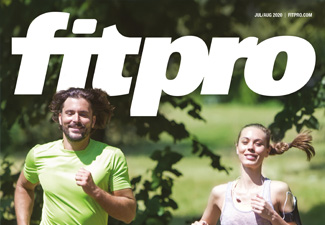Magazine References
Jul – Aug 2020

Pg 14-17 Stress less – adrenal imbalance
References
- Griffin J, Ojeda S, Textbook of Endocrine Physiology, Edition 2, ISBN:0-1950756-7.
- Wilson J, Adrenal Fatigue: The 21st Century Stress Syndrome, Edition 1, ISBN:1-890572-15-2.
- Sapolsky R, Why Zebras Don’t Get Ulcers, Edition 1, ISBN:0-7167-3210-6.
- Selye H (1950), Stress and the general adaptation syndrome, British Medical Journal, June 17.
- Chrousos GP (2000), The role of stress and the hypothalamic-pituitary-adrenal axis in the pathogenesis of the metabolic syndrome: endocrine and target tissue-related causes, Int J Obes Relat Metab Disord, 24 (Suppl2): S50-55.
- Bornstein SR et al (2016), Diagnosis and treatment of primary adrenal insufficiency: an endocrine society clinical practice guideline, The Journal of Clinical Endocrinology & Metabolism, jc.2015-1710 DOI: 10.1210/jc.2015-1710.
- Wolcott W, Fahey T, The Metabolic Typing Diet, Edition 1, ISBN:0-7679-0564-4.
- Williams R, Biochemical Individuality, Edition 1, ISBN:0-87983-893-0.
- Price W, Nutrition and Physical Degeneration, Edition 6, ISBN:0-87983-816-7.
- Fallon S, Enig M, Nourishing Traditions, Edition 2, ISBN:0-9670897-3-5.
- Balbo M, Leproult R, Van Cauter E (2010), Impact of sleep and its disturbances on hypothalamo-pituitary-adrenal axis activity, Int J Endocrinol, 759234. doi:10.1155/2010/759234
- Dement W, The Promise of Sleep, Edition 1, ISBN:0-440-50901-7.
- Foster R, Rhythms of life, Edition 1, ISBN:1-86197-571-6.
- Chang AM et al (2016), Evening use of light-emitting eReaders negatively affects sleep, circadian timing, and next-morning alertness, PNAS.org. doi:10.1073/pnas.1418490112
- Smolensky M, The Body Clock Guide to Better Health, Edition 1, ISBN:0-8050-5662-9.
- Ober C, Earthing, Edition 1, ISBN:978-1-59120-283-7.
- Rosenburg S (2017), Accessing the Healing Power of the Vagus Nerve, North Atlantic Books, California, ISBN 978-1-62317-024-0.
- Bonaz B (2016), Vagal tone: effects on sensitivity, motility, and inflammation, Neurogastroenterology & Motility, 28(4):455-62.
- Mason H, Vandoni M, deBarbieri G, Codrons E, Ugargol V, Bernardi L (2013), Cardiovascular and respiratory effect of yogic slow breathing in the yoga beginner: what is the best approach? Evidence-Based Complementary and Alternative Medicine. Article ID 743504, 7: Published 22 March 2013.
- Mager DE, Wan R, Brown M, Cheng A, Wareski P, Abernethy DR, Mattson MP (2006), Caloric restriction and intermittent fasting alter spectral measures of heart rate and blood pressure variability in rats, FASEB J., 20(6): 631-7.
- Kok BE, Coffey KA, Cohn MA (2013), Perceived positive social connections account for the upward spiral between positive emotions and vagal tone, 24(7): 1123-1132. doi:doi.org/10.1177/0956797612470827.
- Mäkinen TM, Mäntysaari M, Pääkkönen T, Jokelainen J, Palinkas LA, Hassi J, Leppäluoto J, Tahvanainen K, Rintamäki H (2008), Autonomic nervous function during whole-body cold exposure before and after cold acclimation, Pubmed. 79(9): 875-82.
- Dolgoff-Kaspar R, Baldwin A, Johnson MS, Edling N, Sethi GK (2012), Effect of laughter yoga on mood and heart rate variability in patients awaiting organ transplantation: a pilot study. Pubmed. (5): 61-6.
- Tyaqi A et al. (2016), Yoga and heart rate variability: a comprehensive review of the literature, International Journal of Yoga, 9(2): 97-113.
- Telles S, Raghavendra BR, Naveen KV, Manjunath NK, Kumar S, Subramanya P (2013), changes in autonomic variables following two meditative states described in yoga texts, J Altern Complement Med. 19(1): 35-42. doi:10.1089/acm.2011.0282. PMCID: PMC3546358.
- Rogers S, Detoxify or Die, Edition 1, ISBN: 1-887202=04-8.
- Statham B, The Chemical Maze, Edition 2, ISBN: 095785352-1.
- Fitzgerald P, The Detox Solution, Edition 1, ISBN: 0-9708299-0-6.
- Fletcher RH (2002), Vitamins for chronic disease prevention in adults, 287(23): 3,127-3,129. doi:10.1001/jama.287.23.3127
- Osiecki H, The Nutrient Bible, Edition 7, ISBN: 978-1-875239-36-8.
- Gaby AR (2011), Riboflavin. In: Gaby AR, Nutritional Medicine, Concord, Fritz, Perlberg Publishing, 66-68.
- Pedersen M (1998) Nutritional Herbology, A Reference Guide to Herbs, Wendell W Whitman Company, Warsaw, ISBN: 1-885653-07-7.
- Asl MN, Hosseinzadeh H (2008), Review of pharmacological effects of Glycyrrhiza sp. and its bioactive compounds, Phytother Res., 22(6): 709-24.
- Sbrucker RA, Burdock GA (2006), Risk and safety assessment on the consumption of licorice root (Glycyrrhiza sp.), its extract and powder as a food ingredient, with emphasis on the pharmacology and toxicology of glycyrrhizin, Regul Toxicol Pharmacol., 46(3): 167-92.
- Chandrasekhar K, Kapoor J, Anishetty S (2012) A prospective, randomized double-blind, placebo-controlled study of safety and efficacy of a high-concentration full-spectrum extract of Ashwagandha root in reducing stress and anxiety in adults, Indian J Psychological Med., 34(3): 255-62.
- Bhattacharyya D, Sur TK, Jana U, Debnath PK (2008), Controlled programmed trial of Ocimum sanctum leaf on generalized anxiety disorders, Nepal Med Coll J., 10(3): 176-9.
- Edwards D, Heufelder A, Zimmermann A (2012), Therapeutic effects and safety of Rhodiola rosea extract WS® 1375 in subjects with life-stress symptoms – results of an open-label study, Phytother Res., 26(8): 1,220-5. doi:10.1002/ptr.3712.
- Gaffney BT, Hügel HM, Rich PA (2001), The effects of eleutherococcus senticosus and panax ginseng on steroidal hormone indices of stress and lymphocyte subset numbers in endurance athletes, Life Sci., 70(4): 431-42.
Pg 26-29 Inter-limb asymmetry data – Assessing and understanding on a budget
References
- Keeley D, Plummer H, Oliver G (2011), Predicting asymmetrical lower extremity strength deficits in college-aged men and women using common horizontal and vertical power field tests: a possible screening mechanism, J Strength Cond Res., 25: 1,632-1,637.
- Bishop C, Read P, Lake J, Chavda S, Turner A (2018), Inter-limb asymmetries: understanding how to calculate differences from bilateral and unilateral tests, Strength Cond J., 40: 1-6.
- Sato K, Heise G. Influence of weight distribution asymmetry on the biomechanics of a barbell squat. J Strength Cond Res 2012, 26: 342-349.
- Hart N, Nimphius S, Cochrane J and Newton R (2012), Reliability and validity of unilateral and bilateral isometric strength measures using a customised, portable apparatus, J Aust Strength Cond., 20: 61-67.
- Bishop C, Read P, Brazier J, Jarvis P, Chavda S, Bromley T, Turner A (2019), Effects of inter-limb asymmetries on acceleration and change of direction speed: a between-sport comparison of professional soccer and cricket athletes, J Strength Cond Res., (Published ahead of print).
- Bishop C, Read P, Chavda S, Jarvis P, Turner A (2019), Using unilateral strength, power and reactive strength tests to detect the magnitude and direction of asymmetry: a test-retest design, Sports, 7: 58-71.
- Bishop C, Turner A, Maloney S, Lake J, Loturco I, Bromley T, Read P (2019), Drop jump asymmetry is associated with reduced sprint and change-of-direction speed performance in adult female soccer players, Sports, 7: 29-38.
- Balsalobre-Fernandes C, Bishop C, Beltran-Garrido J, Cecilia-Gallego P, Cuenca-Amigo A, Romero-Rodrigues D, Madruga-Parera M (2019), The validity and reliability of a novel app for the measurement of change of direction performance, J Sports Sci., 37: 2,420-2,424.
- Bishop C, Read P, Chavda S, Jarvis P, Brazier J, Bromley T, Turner A (2019), Magnitude or direction? Seasonal variation of interlimb asymmetry in elite academy soccer players, J Strength Cond Res., (Published ahead of print).
- Dos’Santos T, Thomas C, Jones P, Comfort P (2017), Asymmetries in single and triple hop are not detrimental to change of direction speed, J Train, 6: 35-41.
- Lockie R, Callaghan S, Berry S, Cooke E, Jordan C, Luczo T, Jeffries M (2014), Relationship between unilateral jumping ability and asymmetry on multidirectional speed in team-sport athletes, J Strength Cond Res., 28: 3,557-3,566.
- Bishop C, McAuley W, Read P, Gonzalo-Skok O, Lake J, Turner A (2019), Acute effects of repeated sprints on interlimb asymmetries during unilateral jumping, J Strength Cond Res., (Published ahead of print).
- Maloney S, Richards J, Nixon D, Harvey L, Fletcher I (2017), Do stiffness and asymmetries predict change of direction performance? J Sports Sci., 35: 547-556.
- Bishop C, Read P, McCubbine J, Turner A (2018), Vertical and horizontal asymmetries are related to slower sprinting and jump performance in elite youth female soccer players, J Strength Cond Res., (Published ahead of print).
- Cormack S, Newton R, McGuigan M, Doyle T (2008), Reliability of measures obtained during single and repeated countermovement jumps, Int J Sports Physiol. Perform, 3: 131-144.
- Lake J, Mundy P, Comfort P, Suchomel T (2020), Do the peak and mean force methods of assessing vertical jump force asymmetry agree? Sports Biomech., 19: 227-234.
- Balsalobre-Fernandes C, Glaister M, Lockey R (2015), The validity and reliability of a smartphone app for measuring vertical jump performance, J Sports Sci, 33: 1574-1579.
- Cohen D, Burton A, Wells C, Taberner M, Diaz M, Graham-Smith P (2020), Single vs. double leg countermovement jump tests: Not half an apple, Aspetar Sports Med J, Special issue: 34-41.
Pg 32-33 Pregnancy nutrition myths
References
- British Nutrition Foundation (2006), Nutrition in Pregnancy, https://www.nutrition.org.uk/attachments/104_Nutrition%20in%20pregnancy.pdf, accessed on 23 June 2020.
- Danielewicz G et al (2017), Diet in pregnancy – more than food, European Journal of Paediatrics, 176(12): 1,573.
- Chen X et al (2016), Maternal Dietary Patterns and Pregnancy Outcome, 7: 8.


